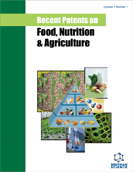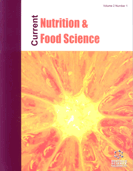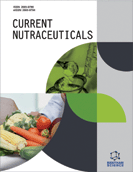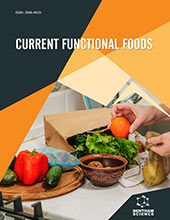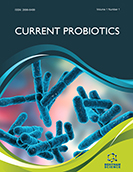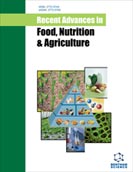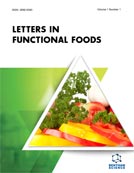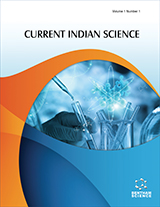Abstract
Edible films/coatings have been considered as one of the potential technologies that can be used to increase the storability of foods and to improve the existent packaging technology, helping to ensure the microbial safety and the preservation of food from the influence of external factors. Innovations constantly appear in food packaging, always aiming at creating a more efficient quality preservation system while improving foods' attractiveness and marketability. The utilization of renewable sources for packaging materials, such as hydrocolloids and lipids from biological origin, is one the main trends of the industry. These films should have acceptable sensory characteristics, appropriate barrier properties (CO2, O2, water, oil), microbial, biochemical and physicochemical stability, they should be safe, and produced by simple technology in low cost. Also they can act as effective carrier for antioxidant, flavor, color and nutritional or anti-microbial additives. Nowadays, a great discussion exists about the potential applications of edible films/coatings on food products. The general trend is to find the correct combination between the food product and the edible film/coating, which will ensure the success of the technology.
Keywords: Edible film/coating, mechanical properties, nanocomposites, permeability, shelf life.
Recent Patents on Food, Nutrition & Agriculture
Title:Recent Innovations in the Area of Edible Films and Coatings
Volume: 5 Issue: 3
Author(s): Neda Maftoonazad, Fojan Badii and Maryam Shahamirian
Affiliation:
Keywords: Edible film/coating, mechanical properties, nanocomposites, permeability, shelf life.
Abstract: Edible films/coatings have been considered as one of the potential technologies that can be used to increase the storability of foods and to improve the existent packaging technology, helping to ensure the microbial safety and the preservation of food from the influence of external factors. Innovations constantly appear in food packaging, always aiming at creating a more efficient quality preservation system while improving foods' attractiveness and marketability. The utilization of renewable sources for packaging materials, such as hydrocolloids and lipids from biological origin, is one the main trends of the industry. These films should have acceptable sensory characteristics, appropriate barrier properties (CO2, O2, water, oil), microbial, biochemical and physicochemical stability, they should be safe, and produced by simple technology in low cost. Also they can act as effective carrier for antioxidant, flavor, color and nutritional or anti-microbial additives. Nowadays, a great discussion exists about the potential applications of edible films/coatings on food products. The general trend is to find the correct combination between the food product and the edible film/coating, which will ensure the success of the technology.
Export Options
About this article
Cite this article as:
Maftoonazad Neda, Badii Fojan and Shahamirian Maryam, Recent Innovations in the Area of Edible Films and Coatings, Recent Patents on Food, Nutrition & Agriculture 2013; 5 (3) . https://dx.doi.org/10.2174/2212798405666131129151640
| DOI https://dx.doi.org/10.2174/2212798405666131129151640 |
Print ISSN 2212-7984 |
| Publisher Name Bentham Science Publisher |
Online ISSN 1876-1429 |
 33
33Related Articles
-
Editorial [Hot Topic: Comparative Biochemistry of Molecular Targets for Drug and Pesticides: N-Acetyl-D-glucosamine and Acetylcholine Related Enzymes (Guest Editor: Qing Yang )]
Current Drug Targets Druggable Orthosteric and Allosteric Hot Spots to Target Protein-protein Interactions
Current Pharmaceutical Design GLP-1 Agonists and Satiety
Immunology, Endocrine & Metabolic Agents in Medicinal Chemistry (Discontinued) Vitamin D: Status, Supplementation and Immunomodulation
Current Nutrition & Food Science Piroxicam: Source for Synthesis of Central Nervous System (CNS) Acting Drugs
Central Nervous System Agents in Medicinal Chemistry Blood-Brain Barrier ABC-transporter P-glycoprotein in Alzheimer's Disease: Still a Suspect?
Current Pharmaceutical Design Mood and Anxiety Disorders in Breast Cancer: An Update
Current Psychiatry Reviews Demographic, Clinical and Laboratory Profiles of HIV Infected Patients Admitted into Imam Khomeini Hospital of Tehran, Iran
Infectious Disorders - Drug Targets Red Blood Cell Indices in Relation to Post-stroke Psychiatric Disorders: A Longitudinal Study in a Follow-up Stroke Clinic
Current Neurovascular Research Neuronal Nicotinic Acetylcholine Receptors as Pharmacotherapeutic Targets for the Treatment of Alcohol Use Disorders
CNS & Neurological Disorders - Drug Targets Anticancer and Antibacterial Activity of Hyperforin and Its Derivatives
Anti-Cancer Agents in Medicinal Chemistry Neurotrophic and Neuroprotective Effects of Muscle Contraction
Current Pharmaceutical Design Roles of Casein Kinase I η and δ in Gastrointestinal Cancers: Potential New Screening Markers and Drug Targets
Current Cancer Therapy Reviews Recent Advances in the Design and Synthesis of Prednisolone and Methylprednisolone Conjugates
Current Pharmaceutical Design Innovative Research Financing for the 21<sup>st</sup> Century: A Case Narrative in How Technology Transfer and Entrepreneurship Supported the Development of a Prototype Cognitive Prosthetic
Technology Transfer and Entrepreneurship (Discontinued) Disorder in Milk Proteins: Structure, Functional Disorder, and Biocidal Potentials of Lactoperoxidase
Current Protein & Peptide Science Nanocarriers Assisted siRNA Gene Therapy for the Management of Cardiovascular Disorders
Current Pharmaceutical Design Molecular Genetics and Biomarkers of Polyglutamine Diseases
Current Molecular Medicine Differences Between COPD Patients of a Pulmonary Rehabilitation Program According to the mMRC Dyspnea Scale
Current Respiratory Medicine Reviews The Role of Spiritual Health Experience with Intensity and Duration of Labor Pain While Childbearing and Postpartum
Current Women`s Health Reviews


